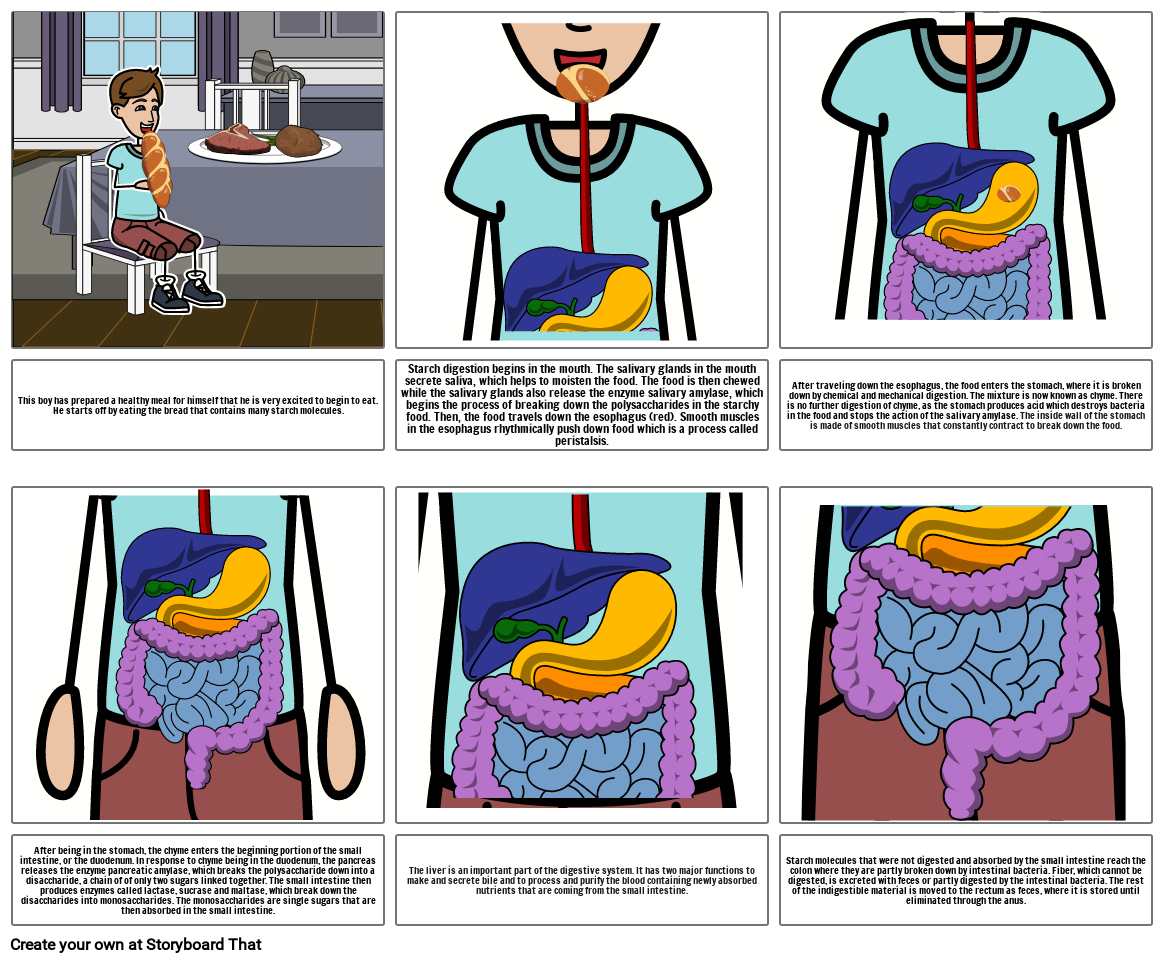Starch Digestion

Snemalna Knjiga Besedilo
- This boy has prepared a healthy meal for himself that he is very excited to begin to eat. He starts off by eating the bread that contains many starch molecules.
- Starch digestion begins in the mouth. The salivary glands in the mouth secrete saliva, which helps to moisten the food. The food is then chewed while the salivary glands also release the enzyme salivary amylase, which begins the process of breaking down the polysaccharides in the starchy food. Then, the food travels down the esophagus (red). Smooth muscles in the esophagus rhythmically push down food which is a process called peristalsis.
- After traveling down the esophagus, the food enters the stomach, where it is broken down by chemical and mechanical digestion. The mixture is now known as chyme. There is no further digestion of chyme, as the stomach produces acid which destroys bacteria in the food and stops the action of the salivary amylase. The inside wall of the stomach is made of smooth muscles that constantly contract to break down the food.
- After being in the stomach, the chyme enters the beginning portion of the small intestine, or the duodenum. In response to chyme being in the duodenum, the pancreas releases the enzyme pancreatic amylase, which breaks the polysaccharide down into a disaccharide, a chain of of only two sugars linked together. The small intestine then produces enzymes called lactase, sucrase and maltase, which break down the disaccharides into monosaccharides. The monosaccharides are single sugars that are then absorbed in the small intestine.
- The liver is an important part of the digestive system. It has two major functions to make and secrete bile and to process and purify the blood containing newly absorbed nutrients that are coming from the small intestine.
- Starch molecules that were not digested and absorbed by the small intestine reach the colon where they are partly broken down by intestinal bacteria. Fiber, which cannot be digested, is excreted with feces or partly digested by the intestinal bacteria. The rest of the indigestible material is moved to the rectum as feces, where it is stored until eliminated through the anus.
Ustvarjenih več kot 30 milijonov snemalnih knjig
Brez Prenosov, Brez Kreditne Kartice in Brez Prijave!
